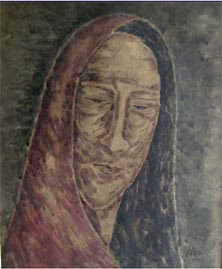Tagore’s paintings are up for auction in London, but a debate on his merit as an artist of would serve the master better jingoistic nationalism
Dartington Hall needn’t have waited for the Nobel laureate’s sesquicentennial birth anniversary before putting up for auction 12 of Rabindranath Tagore’s paintings in London next month. But that the two do coincide has already begun to raise shrill rhetoric around the commercialisation of what the government has declared a “National Treasure” — meaning that works by Tagore cannot be exported. Nothing, however, prevents the sale of Tagore’s works within the country, and nothing, of course, prevents the sale of those works that are already outside the country either. Indeed, what should gladden the hearts of those who have begun their feverish pitch against the auction should be the price estimate — a shabby Rs 1.6 crore for 12 paintings. Surely a National Treasure should be worth much more?
If nothing else, the debate raises some interesting questions. For instance, how might Rabindranath Tagore have painted if his work had been governed by commercial considerations? Would he have modified his brooding imagery to more closely follow the sentimental lines and wash techniques of the maligned Bengal School? Would he have pandered to the whims of the market, or stayed true to the intelligentsia with its greater knowledge of Munch and Matisse, Cezanne and Picasso, all of whom had in greater or smaller measure influenced Tagore? Alongside Amrita Sher-Gil, Tagore is now counted to among the earliest modernists, but would he have fit into that role if he had not had the unfettered freedom to draw, doodle or paint as he chose?
Full report here Business Standard

No comments:
Post a Comment